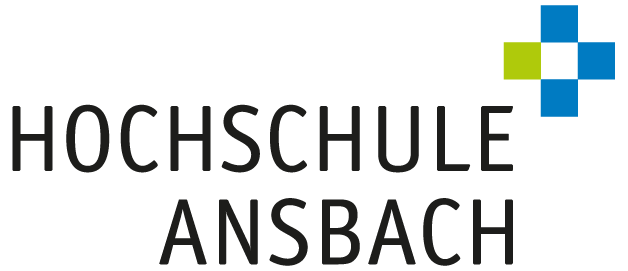
German Translation of the Human-Robot Interaction Evaluation Scale – HRIES.
Kühnlenz, Kolja E.; Kühnlenz, Barbara (2025)
Technical Report 2025 (01/25).
DOI: 10.13140/RG.2.2.21977.99688
Open Access
Effects of Increased Usage of Artificial Intelligence (AI) Technology on User’s Perception of Dependency on Chatbots and Smart Home Systems
Erdmann, Matthias; Lassleben, Lennart; Wagner, Laurin; Prinzing, Christian; Sauer, Sebastian; Kühnlenz, Barbara (2025)
Erdmann, Matthias; Lassleben, Lennart; Wagner, Laurin; Prinzing, Christian...
Lecture Notes in Computer Science (LNAI) 15819, 178–195.
DOI: 10.1007/978-3-031-93412-4_10
Peer Reviewed
AI-based technologies are becoming increasingly significant while transforming human-machine interactions. Yet, many important questions remain unanswered. One example is the research question of the present contribution, regarding the effects of artificial intelligence (AI) on users’ perceptions of dependency on chatbots and smart home systems. The objective is to analyze to what extent users perceive dependencies on these technologies and which factors influence this perception. Based on a survey of 325 users, it was found that dependency perception is currently low but increases with more frequent usage. The results show a substantial association between perception of dependence and frequency of use, with a stronger effect among users of chatbots compared to users of smart home systems. Furthermore, a slight negative effect was observed for attitudes toward AI on dependency perception for both chatbots and smart home systems. To test the hypotheses, linear regression analyses were employed, revealing substantial associations between usage frequency and dependency perception. Despite limitations such as gender imbalance in the sample—even though gender had a negligible effect on PoD –, this study provides valuable insights into the societal impacts of AI and lays the groundwork for future research in this area. Future studies should include larger and more representative samples and develop validated measurement instruments to enhance the generalizability of findings. The results emphasize the necessity of critically evaluating the deployment and integration of AI technologies to identify potential dependencies at an early stage.
Effects of Cognitive Load Variation on Anthropomorphism During a Cooperative Human-Robot Pick-and-Place Task
Rais, Mohammed C.; Kühnlenz, Barbara; Kühnlenz, Kolja E. (2024)
Proceedings of the 21st International Conference on Informatics in Control, Automation and Robotics (ICINCO) 2, 314-318.
DOI: 10.5220/0013057700003822
Peer Reviewed
This paper investigates anthropomorphism of a robot arm during a cooperative human-robot pick-and-place task, while varying cognitive load of test persons. Test persons are required to repeatedly provide a Lego brick for the robot by alternatingly putting it onto one of two trays. The robot then picks it up and puts it in front of the test person again. Cognitive load is varied by whether or not an initially given 8-digit number has to be remembered by the test person. Dimensions of anthropomorphism are acquired using the HRIES questionnaire and cognitive load is acquired using two state-of-the-art questionnaires. Results show a significant correlation of perceived sociability and animacy on mental demand and cognitive load, but only in the high load condition. It is suggested, that cognitive load should be considered during cooperative task design because resulting variations of anthropomorphism may impact cooperative task performance.
Autonomous vehicle eHMI communication modalities: pedestrian preferences in crossing scenarios
Kühnlenz, Kolja E.; Kühnlenz, Barbara (2024)
at - Automatisierungstechnik 72 (12), 1160-1168.
DOI: 10.1515/auto-2024-0084
Peer Reviewed
Abstract
This paper presents results from a study on the impact of negative attitudes towards robots on pedestrians’ needs for technological communication capabilities of autonomous vehicles and preferred communication modalities. Further, the amount of prior information on autonomous vehicles given to test persons is varied. The study is realized in terms of an imagination scenario. Results show a significant dependency of the demand for communication of autonomous vehicles with pedestrians on the extent of negative attitudes towards robots as well as a general demand for such communication capabilities. Interestingly, these findings are independent of the amount of prior information. Differences of preferred communication modalities with respect to negative attitudes or prior information are not found. The results of this study emphasize the importance of vehicle-pedestrian communication, particularly, using multi-modal interfaces in future autonomous driving technology.
ZusammenfassungDieser Beitrag präsentiert die Ergebnisse einer Studie über die Auswirkungen negativer Einstellungen gegenüber Robotern auf die Bedürfnisse von Fußgängern nach technologischen Kommunikationsmöglichkeiten autonomer Fahrzeuge und bevorzugte Kommunikationsmodalitäten. Darüber hinaus wird die Menge an Vorinformationen zu autonomen Fahrzeugen, die den Testpersonen gegeben werden, variiert. Die Studie wird anhand eines imaginären Szenarios durchgeführt. Die Ergebnisse zeigen eine signifikante Abhängigkeit des Bedarfs an Kommunikation autonomer Fahrzeuge mit Fußgängern vom Ausmaß negativer Einstellungen gegenüber Robotern sowie eines Bedarfs an solchen Kommunikationsfähigkeiten allgemein. Interessanterweise sind diese Erkenntnisse unabhängig von der Menge an Vorinformationen. Unterschiede der bevorzugten Kommunikationsmodalitäten in Bezug auf negative Einstellungen oder Vorinformationen wurden nicht festgestellt. Die Ergebnisse dieser Studie unterstreichen die Bedeutung der Fahrzeug-Fußgänger-Kommunikation, insbesondere unter Verwendung multimodaler Schnittstellen in zukünftigen autonomen Fahrtechnologien.
Prof. Dr. Barbara Kühnlenz
Hochschule Ansbach
Hochschule Ansbach - Fakultät Wirtschaft
Residenzstr. 8
91522 Ansbach
T 015221866138 barbara.kuehnlenz[at]hs-ansbach.de
